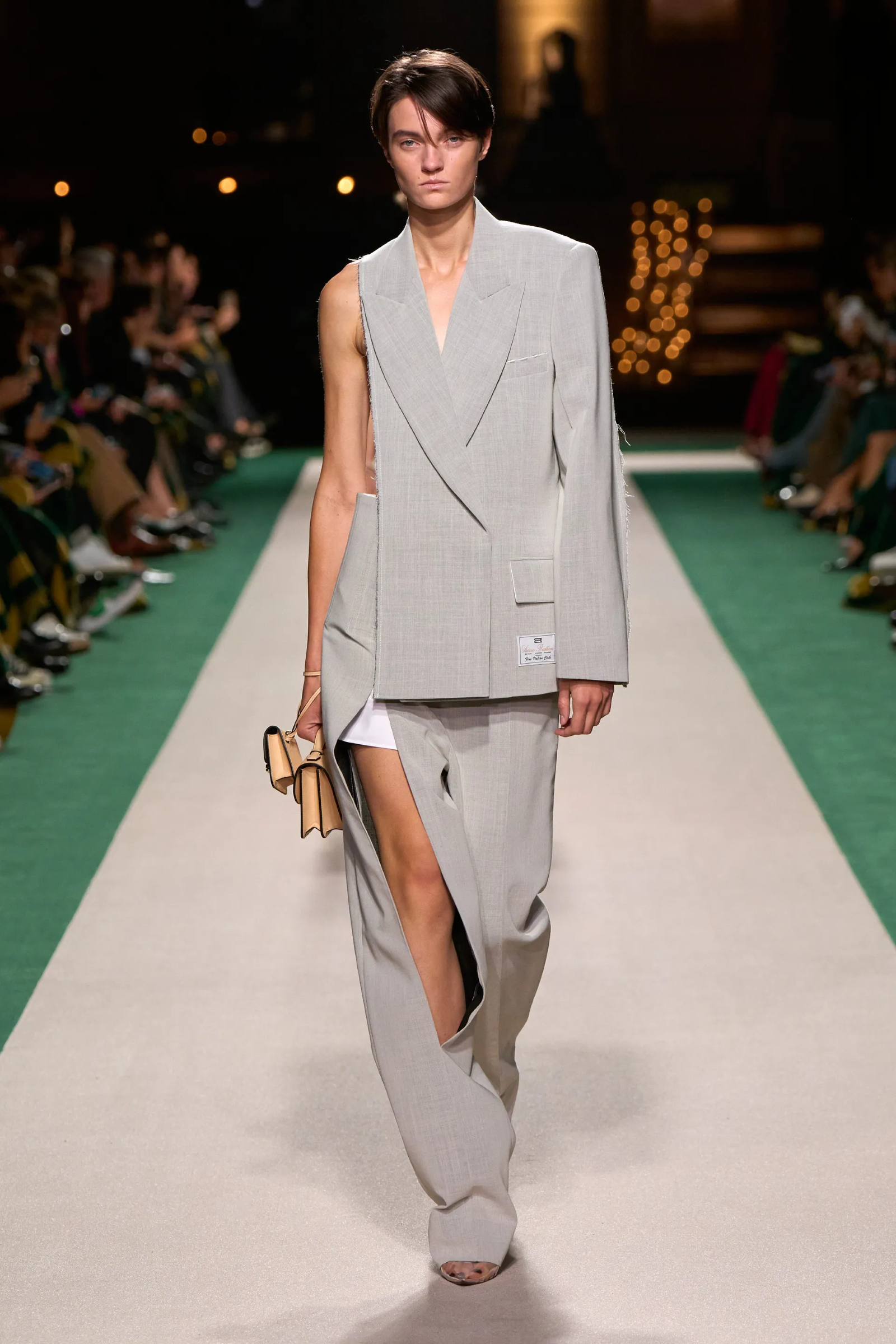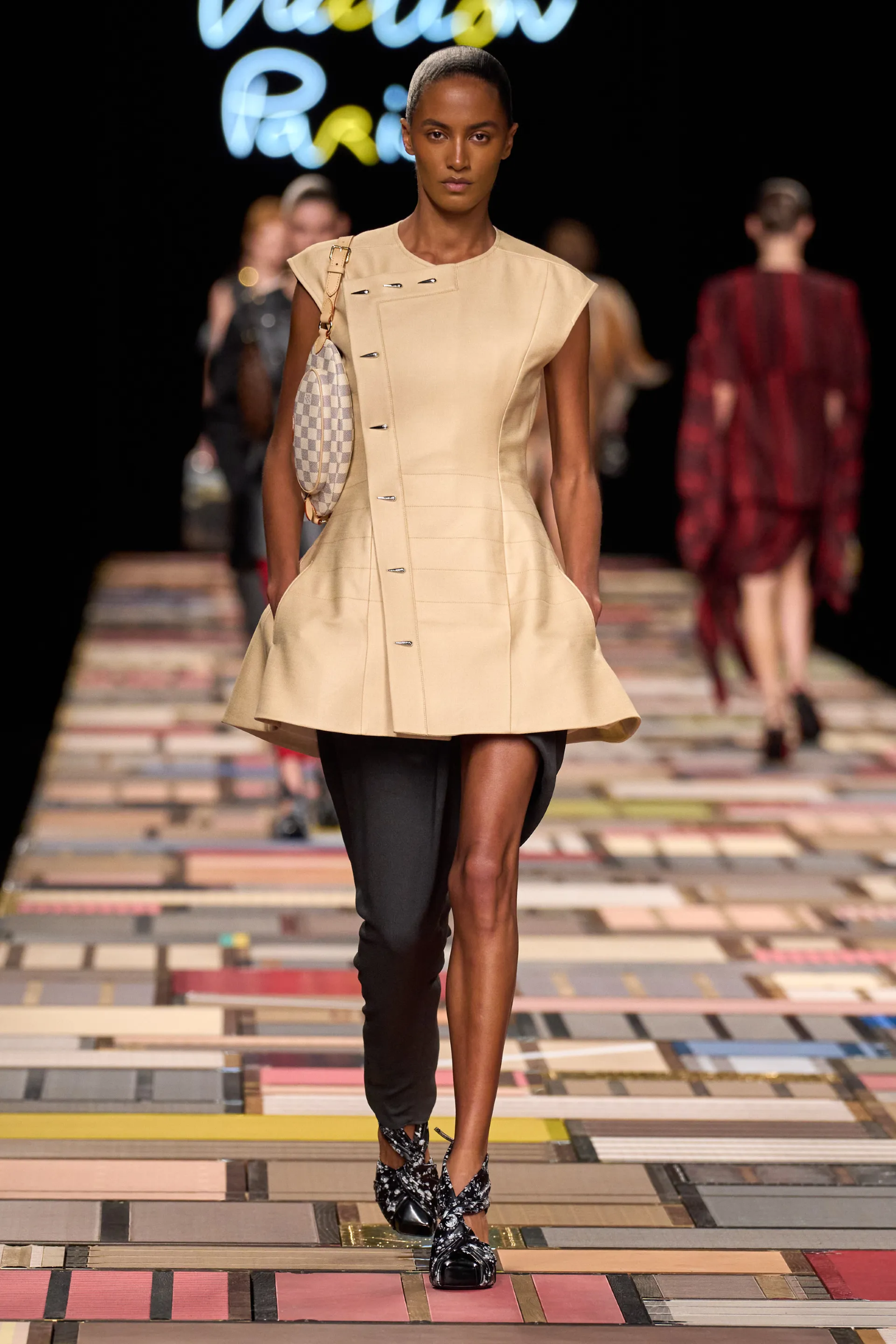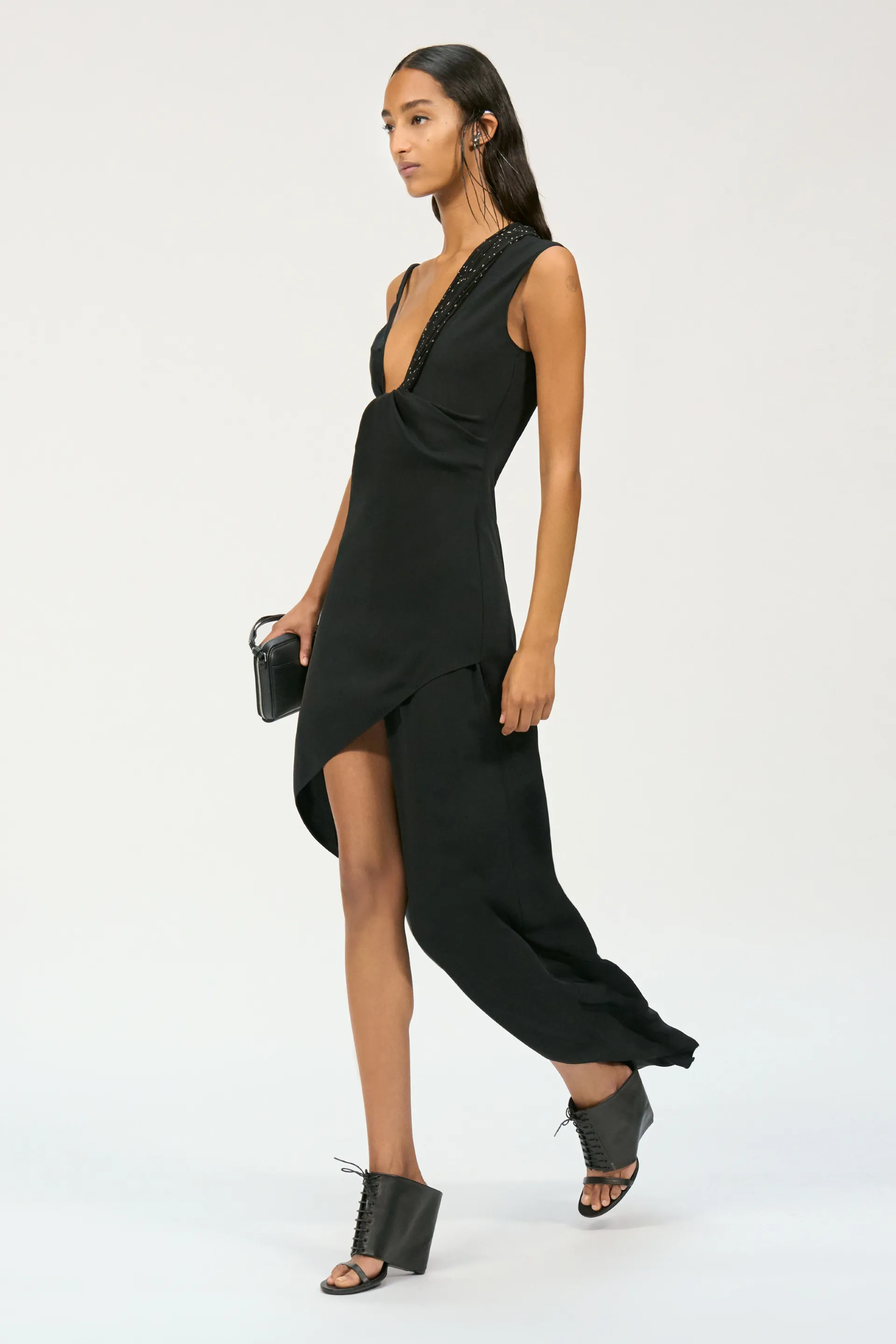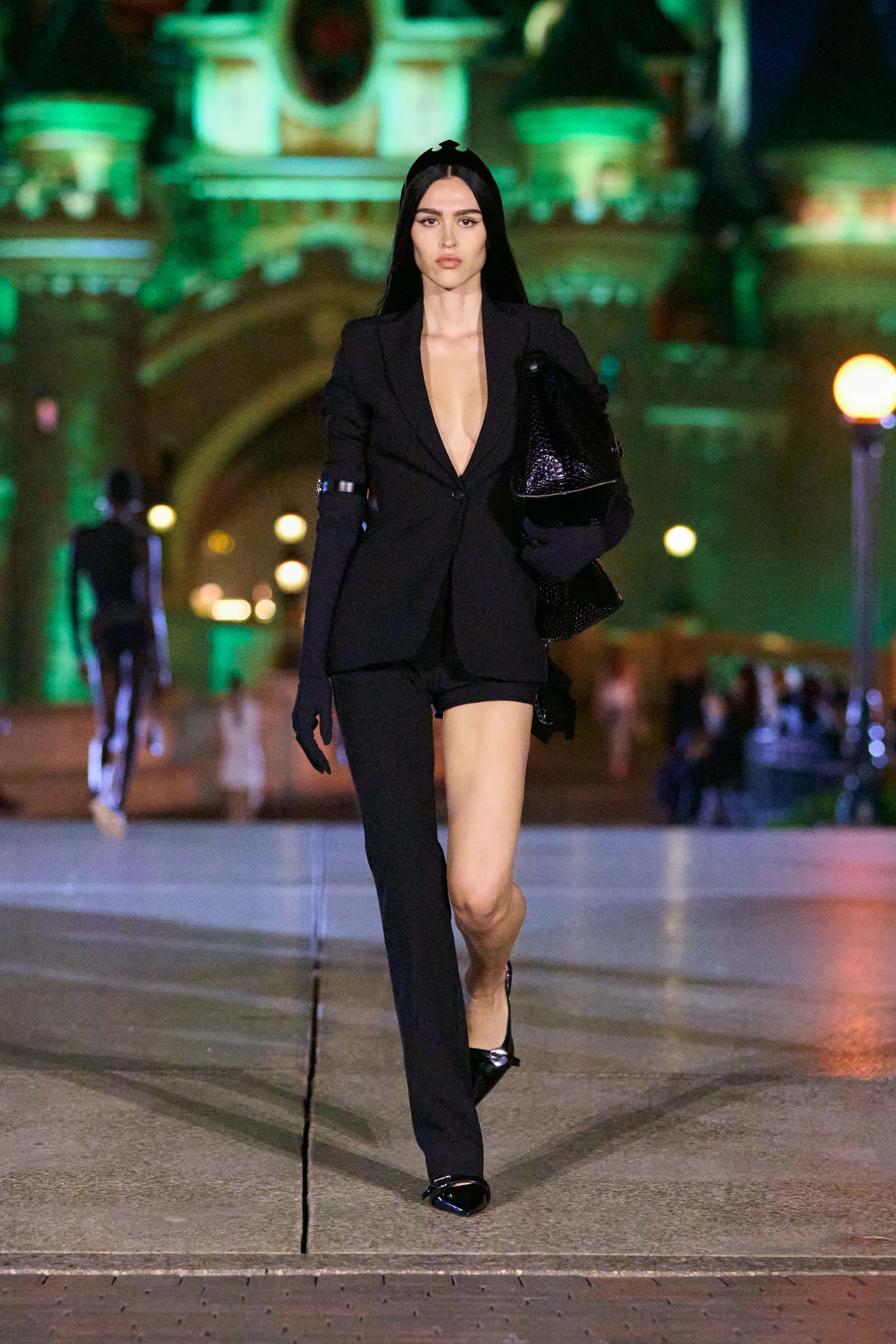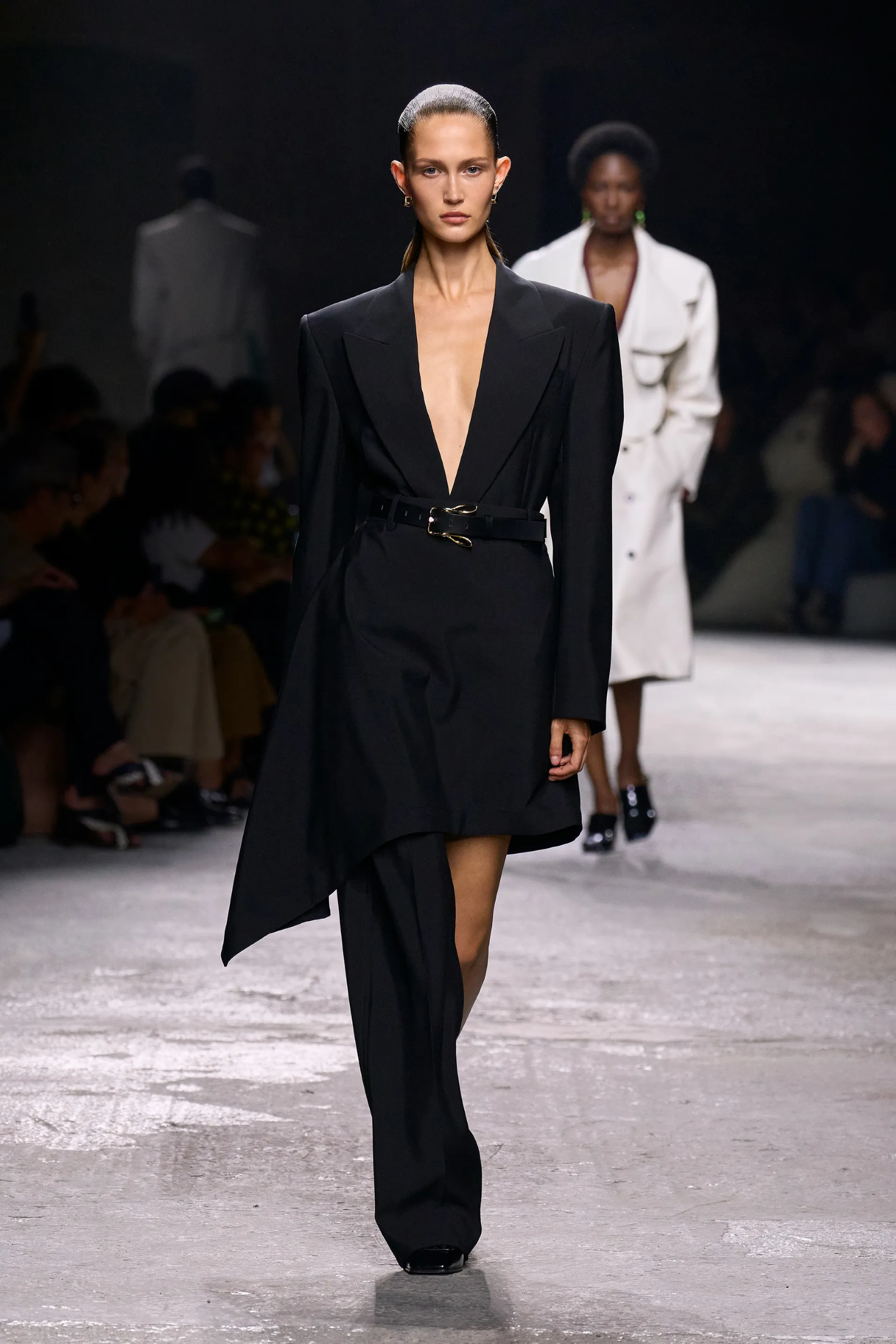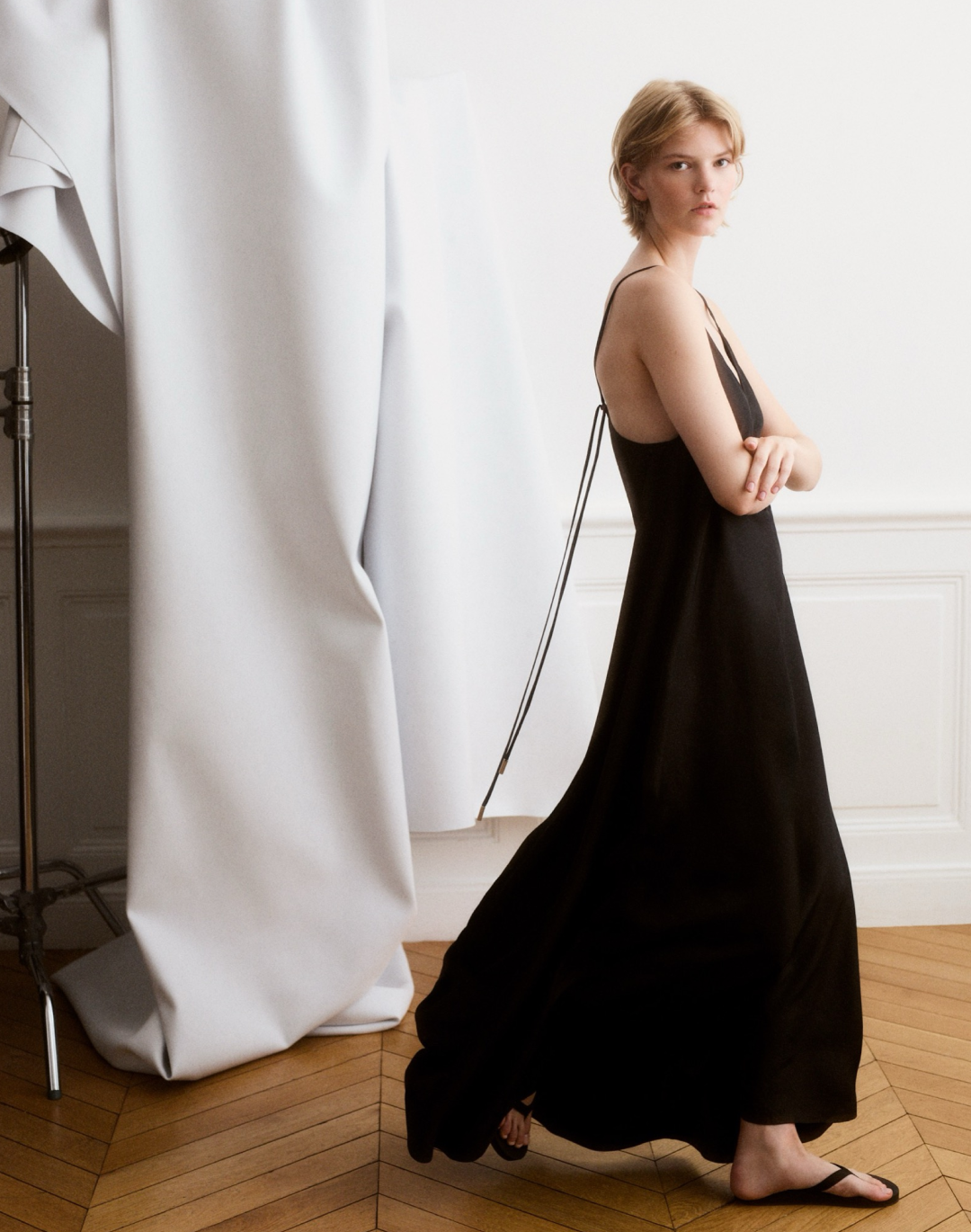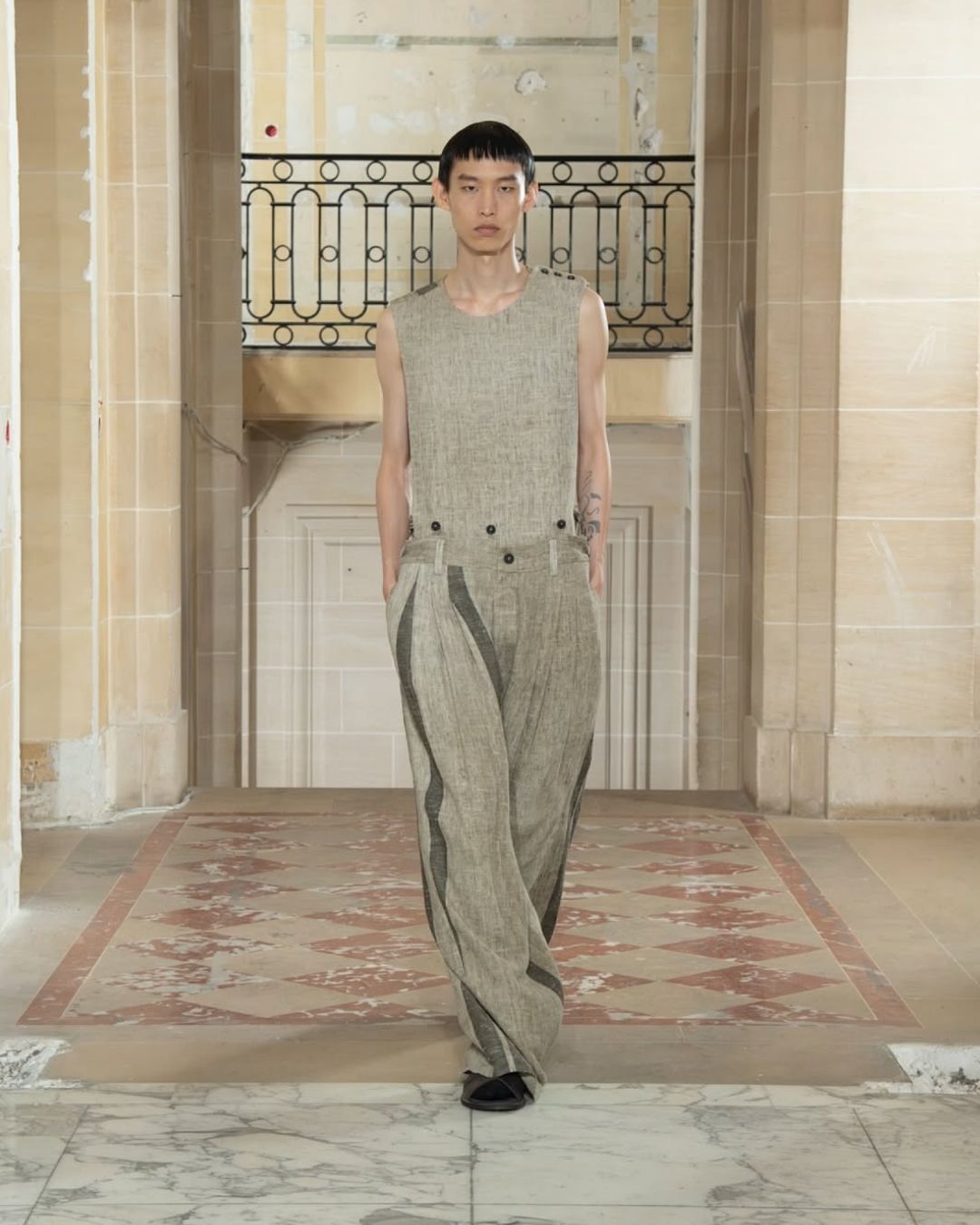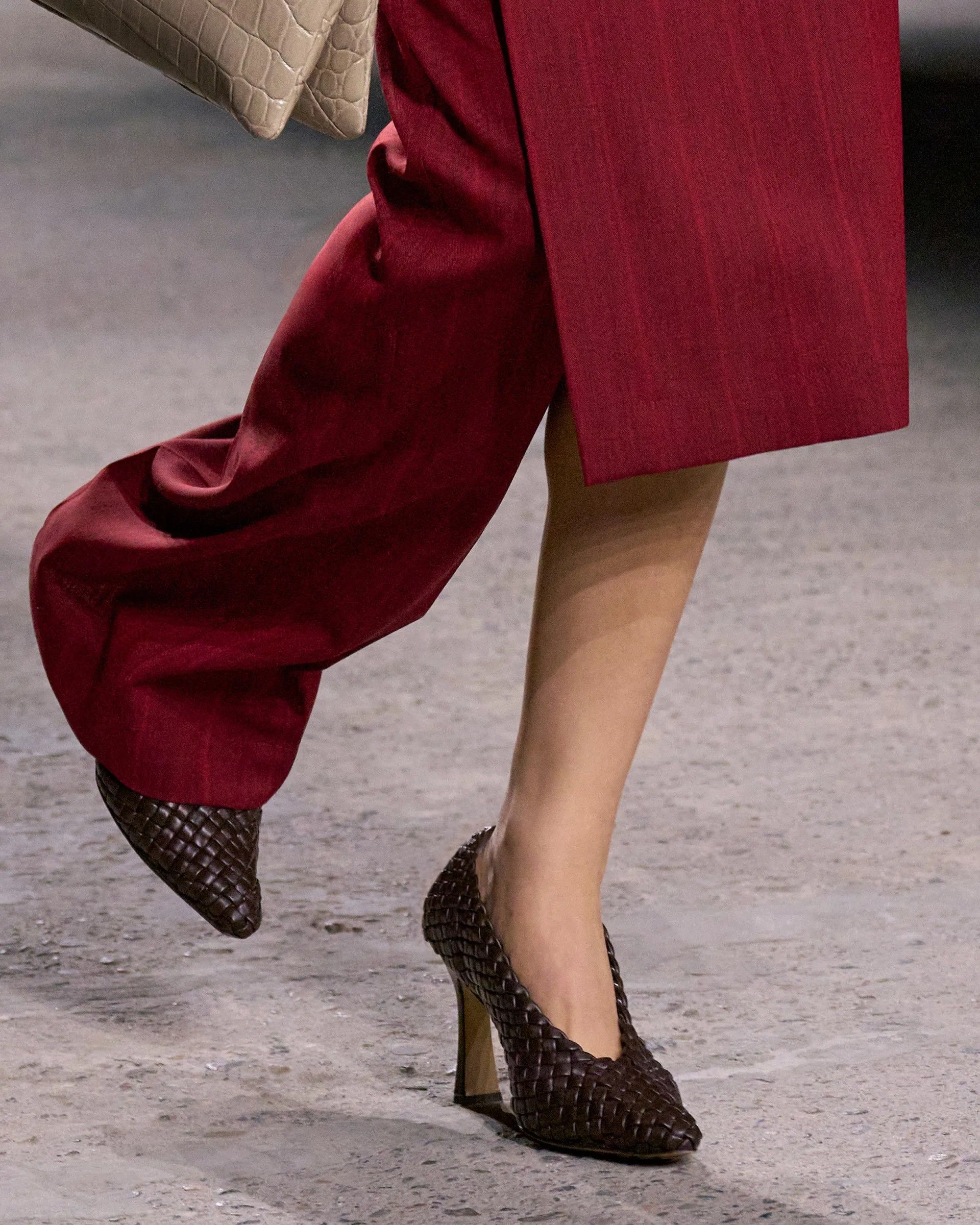
When the trousers are missing a leg Tailoring or tomfoolery?
When in fashion there is a need to create something innovative, there are two paths to follow. The first involves rethinking the engineering of garments and the way they are worn, the second simply involves making something common look stranger. So it's not entirely clear which of the two approaches was followed by the designers in Paris and Milan who this season included one-legged pants in their collections. It was featured in five shows altogether, but visible enough and close enough in timing to be considered a seasonal trend. The most prominent and perhaps best-executed example was by Bottega Veneta, which employed different models of one-legged pants, combining them with skirts for a decidedly successful avant-garde effect (albeit not any less over-the-top). Courrèges followed, actually presenting a dress with a hyper-asymmetric hem, one side of which was so long it wrapped around the model’s entire leg as she walked; then came Victoria Beckham with pants featuring a front slit in a cross-cut style, and finally, among the last shows in Paris, there were two literal one-legged pants from Coperni and Louis Vuitton. Regardless of the medium, the effect was the same: breaking the regularity of an otherwise “normal” look by exposing one of the two legs. The fact that this style has been adopted by designers specializing in a certain cerebral modernism (Victoria Beckham’s design director, Lara Barrio, is a veteran of Acne Studios, Ferragamo, and Chloé) indicates a desire to add dynamism to a very codified and conventional sartorial uniform – but is this apparent trend really new?
In reality, asymmetric pants and jeans have been around for a while, mostly in the indie scene. The earliest ones on record are from designer Sarah Aphrodite-Stolwijk (Dutch, but based in the USA), who has been making them since at least 2006 and even described them as "my signature" in an interview with 1Granary four years ago. Since Aphrodite-Stolwijk is a radical indie designer, who didn’t advertise her brand for nearly ten years and produces collections meditatively and sporadically, many cite Ksenia Schnaider’s asymmetric pants as the origin of the trend, although brands like Pushbutton, Di Du, and Wesley Harriott have showcased one-legged pants on the runway. After the pandemic, in 2022, the style emerged among indie brands at New York Fashion Week like Eckhaus Latta, Puppets and Puppets, and Maryam Nassir Zadeh. That same year, the Ukrainian brand Frolov began producing them, even finding a niche clientele. Only last month, the style appeared on the mood boards of the five brands we've mentioned. The origin of the one-legged pants seen at the latest fashion month seems to be a fusion of influences: on the one hand, the pants produced over the years by various indie brands (from which the mainstream fashion world often borrows quite freely), and on the other, the habit that dancers have of pulling up one leg of their pants during rehearsals to visually track muscle movement and the accuracy of certain moves. A mix of nature and culture, one might say.
@olivia.kleven more grooves with just the one pant leg rolled up
Honestly, opinions on this design solution are divided. Vanessa Friedman of the New York Times, for instance, found them interesting but indicative of a season dominated by chaos and idiosyncrasy in a world in turmoil. Maliha Shoaib of Vogue, however, felt some reservations about the design, even though she notes Frolov’s case, which enjoys some commercial success, integrating one-legged pants into full looks that balance and complement them. Without a doubt, however, the appearance of the style indicates a general trend in taste moving towards asymmetry, which has also appeared in more conventional forms in a number of looks this season. But in all likelihood (and this is our prediction), aside from some street style at fashion weeks, red carpet looks, and the occasional collector, this type of pant doesn't seem destined for huge commercial success – primarily due to the style's complete impracticality, and secondly, the limited application it might have in ultra-affluent social settings, which ultimately include the clientele for the various mentioned brands. It really does make one wonder if, beyond the taste for the bizarre, this trend will ever stand on its own two legs.










































